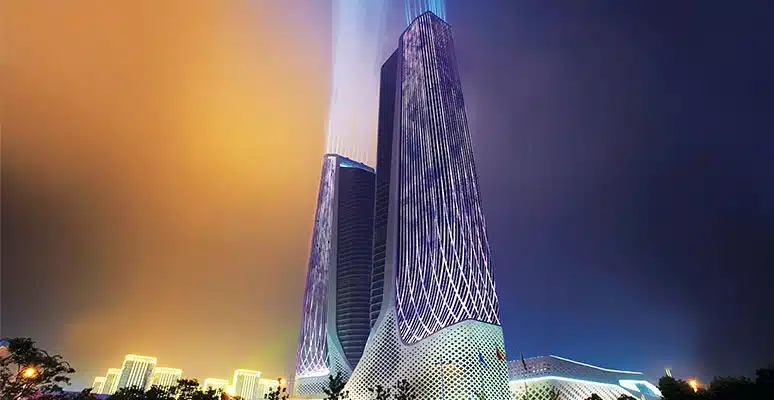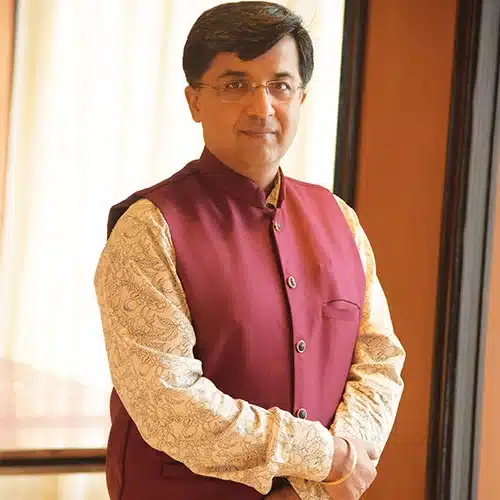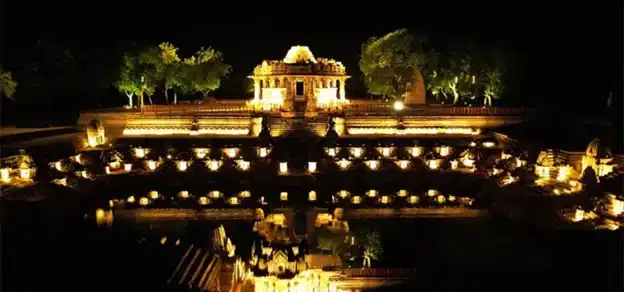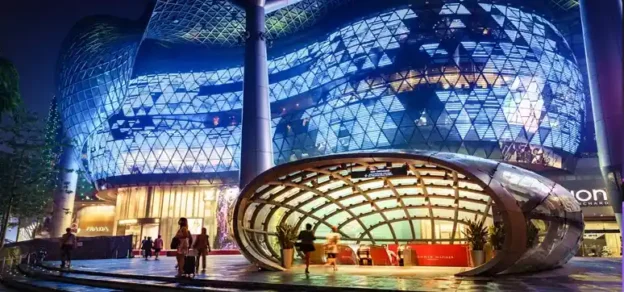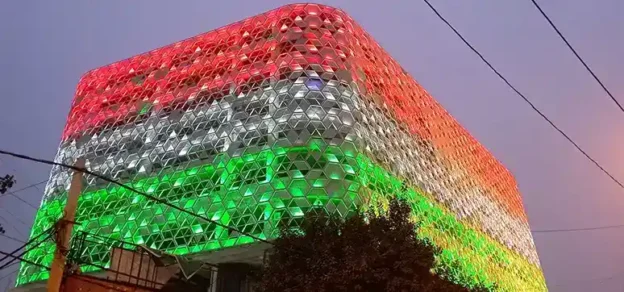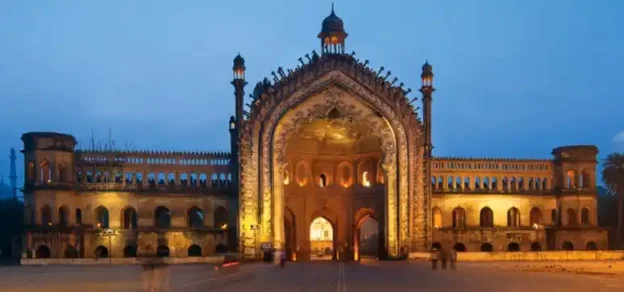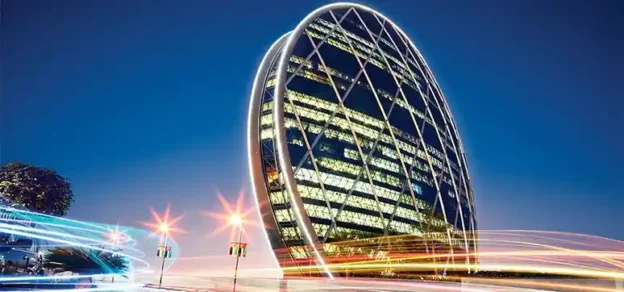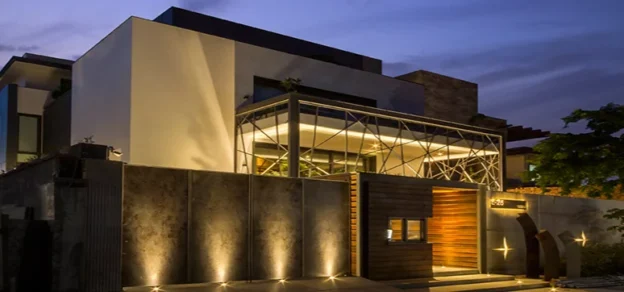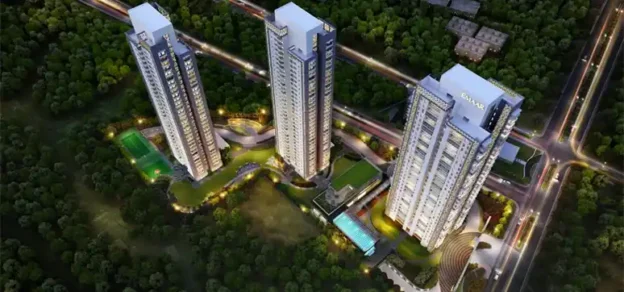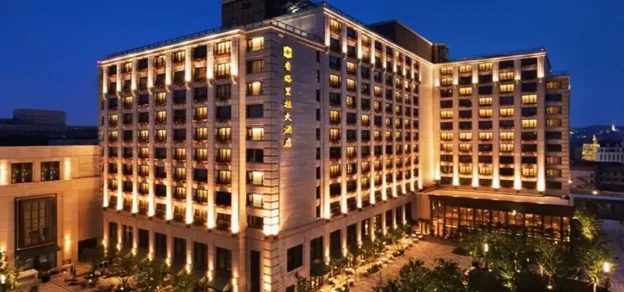Façades have become a novel real estate in the world of the Indian construction industry today.
Modern façades have also become more expressive towards the building’s character, positioning, technology and branding alike apart from the coherent skin to the structure. While commercial real estate is still picking up since demonetization and RERA, the use of façades as an asset to buildings is also on the rise. This is a late revival relatively as the South Eastern countries and the western world has already explored and is improving this aspect of the marketable space.
As our lifestyles are adding more hours to outdoor activities, it is imperative for city centers / urban destinations to be receptive and more welcoming and needless to say – safe and dynamic. Parallelly, we have noticed that digital technologies are rapidly finding their way into urban spaces.
Façade lighting with multiple digital content possibilities hence has become prominent going ahead. In other words, Media façades are the order of the day.
Today we have permanent media façade installations worldwide that compete for attention. These façades create unique identities for these buildings as they chatter and broadcast content/ graphics/ messages/ branding/ experience to citizens.
The term “Media Façade” can be identified with façade sized screens that can be animated and illuminated in patterns which are created with intense programming using embedded LED lighting or projections. Popular destinations like Times Square, the Strip in Las Vegas and Hong Kong are pioneers for this media architecture.
The façade itself is dematerialized and turned into one huge advertising medium for sending messages. As soon as the sun sets, the building moves into the background and serves only as a backdrop for the light show which then becomes the main attraction.
Architecture tends to use media façades more and more as a stylistic feature. What used to be applied to façades after construction till only recently is now part of the planning process and offers new scope for visionary design which coined the term ‘Mediatecture‘. Due to their size, visibility and their technical capabilities, they offer great potential for interaction and for becoming the future displays of public spaces.
Façade Lighting

First impressions count. Whilst a building’s appearance may not speak, it can be perceived as an indication of the quality of the services provided inside. Factors like service, atmosphere and accessibility play an increasingly important role, but there is also the general image and reputation of a building, its owner and the designer.
There is no qualm about the fact that with time, façade lighting is becoming a differentiator and also an imperative line item in modern buildings to attract footfall for extended hours and address the 24×7 lifestyles. More and more real-estate builders, private buildings, IT Parks, hospitals, hotels and even municipalities are availing of this possibility to differentiate from their competition and in-process creating an urban lightscape.
The cities/localities with façade lighting feel safer and more striking than areas without, often to citizens.
Not only modern buildings, but also heritage buildings are being celebrated for night tourism supported by the Government. The landmarks, buildings and monuments that lie at the heart of a city are the essences of its unique heritage and identity. The right lighting can preserve that at night, showcasing structures and materials and transforming the city into an alluring destination.
Lighting creates exciting spaces that people want to spend time in, eating, drinking and taking in the sights. Lighting offers a great tool to improve people’s lives. By highlighting certain features and concealing others, it encourages people to discover the contours and details of the city that are not visible during the day. Human beings are like flies; attracted to light. So the trick is simple.
Power Of Messaging

There is no shortage of regular form of media around us – print (newspaper, magazine), Broadcast (TV, radio), Out of Home Media (hoardings, signages), Internet (computers, mobile). In order to catch consumer attention, these mediums are fighting tooth and nail with each other as well as competition within their own segment.
Advertisers are exploring new forms to reach their clients’ prospects. Media façade is definitely an impactful opportunity that lies open where the physical and the digital mingle and mediatecture is born.
Advantages of Media Façade in Modern Times
1. Marketing: Needless to say, because of their sheer size and visibility, the entire space is up for grabs for dynamic marketing. Whether it is public messaging or commercial advertisements, media façades are quite emphatic. Example NDMC building, New Delhi.
2. Social impact: Many cities and regions across the developed countries have devised lighting events to attract visitors, enhance tourism. It is no secret that urban destinations are continuously striving for innovative ways to stand out and capture their share of the global tourism market.
Many cities have used lighting to develop tourism and hence been able to spruce up their local economies. Example, Liverpool in England, Badajoz in Spain, Valladolid in Spain.
3. Revenue Generator: Owing to easy programmability and transition, media façades can be sold to various bidders for advertisement rights. Also, the more innovative the façade lighting, the more footfall is assured for the building, ensuring higher rentals and return on investment for the promotor. Example – India Trade Tower, Mohali.
4. Branding: There is branding for the brands and there is branding for the building itself. Even architecture needs brand positioning. Building with media façades is bound to have a better perception that its otherwise static neighbors.
Also, since it is media-driven, the ability to adapt to any situation is observed as a unique attraction by citizens. The Prime advantage being the ability to grab maximum eyeballs.
5. Public Engagement: With governments promoting smart cities, it is imperative that citizens would become smarter and will need smarter environments to congregate and celebrate. Media façade is a very interesting canvas to engage modern citizens thru their interactivity. Example Dexia Towers in Brussels showcases interactive scenarios or temperature and weather forecasts and BCP Affinity in Peru lets the citizens control the media on its façade thru a large touchscreen accessible to pedestrians.
Types of Media Façade
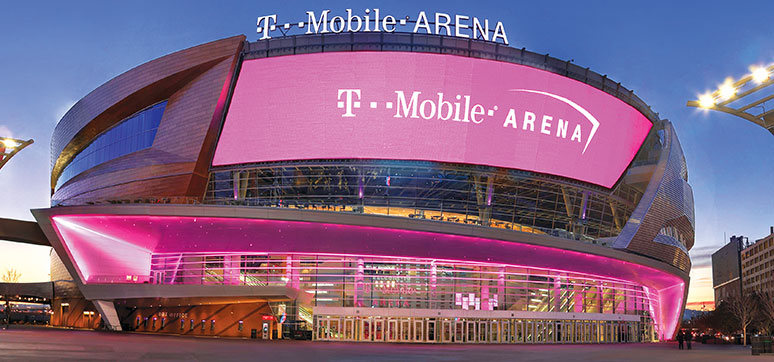
Technologies are evolving and empowering the building and lighting industry with many options for media façades going ahead. There are various types of media façades:
1. Pixelated: Very simply put these façades are typical billboards embedded with the façade elements to render a large screen experience wrapped around the building. The density of the pixels varies as per architectural elements as well as visibility desired for the media. Example, The Lantern at 11 Soho St, London.
2. Lines of light: This is the stripped-down version of pixelated façade using lines of light (vertical, horizontal, slanting) creating a pattern along the columns, beams or any other prevalent elements of the façade. Example Hotel Intercontinental in Dubai, Harrah’s Atlantic City in Las Vegas
3. Mechanical Media Surfaces: At Jean Nouvel’s famous ‘Institute du Monde Arabe’ a mechanical media surface has been permanently integrated into the façade construction. The façade is made up of a lavishly constructed lattice window to which blinds have been attached which imitate those of a camera.
Using their reaction to the intensity of the sun, light shining into the building can be regulated. The visible mechanics and the design of the blinds come together in an ornamental pattern that changes in interaction with sunlight.
4. Projections Mapping: Projections form an intangible content beyond the surface onto which pictures are projected. The challenge is the interaction of the surfaces, the technology and the content of the projections. By using specialized software, a two- or three-dimensional object is spatially mapped in the virtual program which mimics the real environment it is to be projected on.
Large companies such as Nokia, Samsung, Unilever, Bank Alfalah, Brighto Paints, Benson & Hedges, John Players Gold Leaf and BMW have used video projections to create campaigns for their products in major cities across the world. For example, Projection mapping at Fête des Lumières (Lyon Lighting Festival).
Internet Of Things
With the possibilities of IoT weaved in our day-to-day lives, media façades can’t be far behind. Enabled by IoT and cloud technologies it is possible to monitor, manage and program media façades remotely.
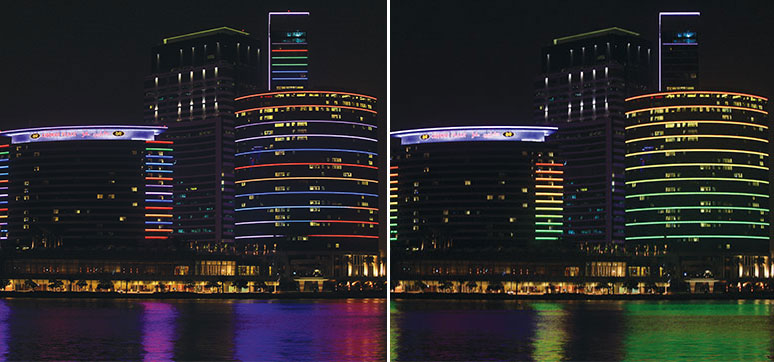
Today, it is possible to create and trigger light shows from anywhere, while simplifying maintenance to protect the complex installation. Apps and Dashboards as new age user interfaces have made it friendly to use. So while the installation can be in Delhi or Mumbai, one can monitor and program it from a Chennai or Bangalore and vice-versa through cloud technology.
Balancing Act – Light Pollution
Media façade can evoke the most diverse emotions, from a big city feeling to annoyance at light pollution. While the energy consumption is generally low owing to the advance technologies available, light pollution requires general concern when designing media façades especially when we are concentrating on the environmental impact of the façade on the surroundings.

The negative effects cannot be denied, such as light scatterings that can annoy human habitat in the vicinity. There is a negative effect on nature and untamed life; influencing the behavior of natural life creatures, causing a negative effect on plants, influencing their development cycles, causing a dangerous effect on immigrant birds, which are diverted and getting perplexed.
Moreover, billions of insects die on the surfaces of open lights, thus, decreasing regular nourishment for birds. In addition, offensive advertising could occupy drives, particularly amid evening time, causing accidents.
It is therefore advised to exercise restraint by individual building promoters, designers and authorities alike. Time will soon be ripe to draft guidelines to moderate the media façade lighting practices to ensure a balance of human business and nature alike.
LEED (Leadership in Energy and Environmental Design) ratings also emphasize minimising light pollution by specifying thresholds of the percentage of lumens aimed upwards as per the building’s location and importance.
The International Dark-Sky Association (IDSA) is another non-profit organisation that works to help stop light pollution and protect the night skies for present and future generations.
Way Ahead
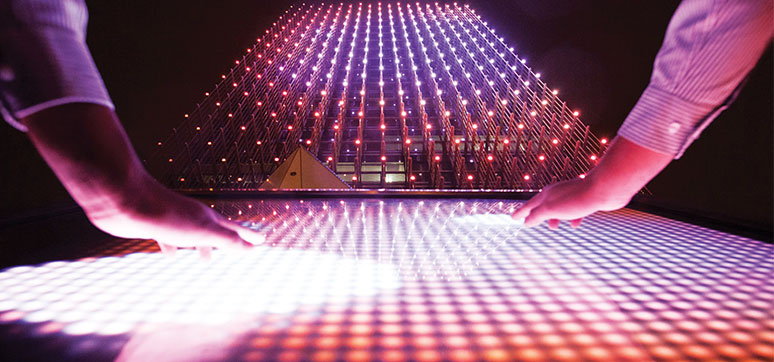
Going forward, media façade would become a permanent part of the urban space. Its context and surroundings affect how content is perceived and experienced as well. With the integration of digital technologies, such as projectors, light emitting or display elements, building façades in urban spaces offer new possibilities for interaction and engagement.
Furthermore, the architectural and technological design of the façades raises the need for new approaches to plan and construct such façades, as well as to develop novel interactive installations to exploit the enormous potential of media façades.
As India becomes one of the most sought after investment destination, it is bound to be seen upon by the Third world countries as a role model of development.
While we may not aim to follow the developed nations in creating megapolis of limitless consumption, it is imperative to showcase sustainable growth by creating examples of sensible design and development. Media façades are yet to hit their prime in India and have a bright future. We need a sensitive, energy-efficient and contextual approach towards this new nocturnal adventure.
